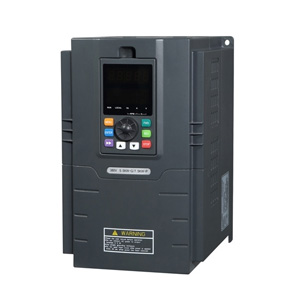Difference between VFD Overload and Over-current
Generally, the variable frequency drive shows OC fault at current trip. There are several reasons for over-current: VFD module damages, so it shows fault as soon as it turns on, bad module, unbalanced output voltage, rapid increase of load current. Failed load torque lifting, or incorrect setting of acceleration and deceleration time, torque mutation, resulting in current rising. The motor capacity does not match the power of VFD. Generally, the motor power is large while the VFD power is too small.
Overload protection, is a protective measure to prevent excessive load power. Over-current protection is a protective measure to prevent excessive current. Sometimes the overload trip would show as OC failures, or OH failure. OH means overheat, the VFD has poor heat dissipation, OH will be displayed when the module’s temperature rise reaches a certain value. According to experience, current tripping and overload tripping have the above differences. Over-current is caused by serious overload in a short time or other factors; overload is caused by the load that leads to a temperature rise above the standard.
VFD is a kind of electric control equipment that uses the variable frequency technology and microelectronics technology to control AC motor by changing the motor’s working power frequency. In order to protect the safe operation of equipment, VFD will set up current over-limit protection and overload over-limit protection. When the over-limit occurs, it takes corresponding measures automatically, such as alarm or shutdown.
Over-current means that the current of motor (VFD output) exceeds the specified value. Overload means that the load on motor exceeds its rated power. Over-current and overload are mainly caused by overload of motor. The reason for classifying into two indicators is that:
Overload protection, is a protective measure to prevent excessive load power. Over-current protection is a protective measure to prevent excessive current. Sometimes the overload trip would show as OC failures, or OH failure. OH means overheat, the VFD has poor heat dissipation, OH will be displayed when the module’s temperature rise reaches a certain value. According to experience, current tripping and overload tripping have the above differences. Over-current is caused by serious overload in a short time or other factors; overload is caused by the load that leads to a temperature rise above the standard.
VFD is a kind of electric control equipment that uses the variable frequency technology and microelectronics technology to control AC motor by changing the motor’s working power frequency. In order to protect the safe operation of equipment, VFD will set up current over-limit protection and overload over-limit protection. When the over-limit occurs, it takes corresponding measures automatically, such as alarm or shutdown.
Over-current means that the current of motor (VFD output) exceeds the specified value. Overload means that the load on motor exceeds its rated power. Over-current and overload are mainly caused by overload of motor. The reason for classifying into two indicators is that:
- Objects they protect are different. Over-current is mainly used to protect variable frequency drive, while overload is mainly used to protect motors. As the capacity of VFD is usually larger than that of motor, the VFD may not necessarily over-current when the motor is overloaded.
- Different current change rate. Overload protection occurs in the working process of production machinery, the current change rate is usually small. Other over-currents except for overload are often sudden, the current change rate is usually large.
-
Different ways of protection. Overload protection has the characteristic of reverse time limit. Overload protection mainly prevents motor from overheating, so it has the characteristics of “reverse time limit” similar to thermal relay. That means, if the over-current is not much comparing to the rated current, the operation time would be longer. But if the over-current is too much, the allowable operation time would be shortened. Moreover, the heat dissipation of motor becomes worse as the frequency decreases, so the lower the frequency, the shorter the allowable operation time under 50% overload. over-current is mainly to prevent the damage of VFD electronic components, such a damage occurs rapidly, once over-current occurs, take measures immediately.
Post a Comment:
You may also like:

Variable Frequency Drives
Featured Articles
What is a Variable Frequency Drive
 Variable frequency drive (VFD) is an adjustable speed drive used for motor drive system, control the speed and torque of the AC ...
Variable frequency drive (VFD) is an adjustable speed drive used for motor drive system, control the speed and torque of the AC ...
 Variable frequency drive (VFD) is an adjustable speed drive used for motor drive system, control the speed and torque of the AC ...
Variable frequency drive (VFD) is an adjustable speed drive used for motor drive system, control the speed and torque of the AC ...